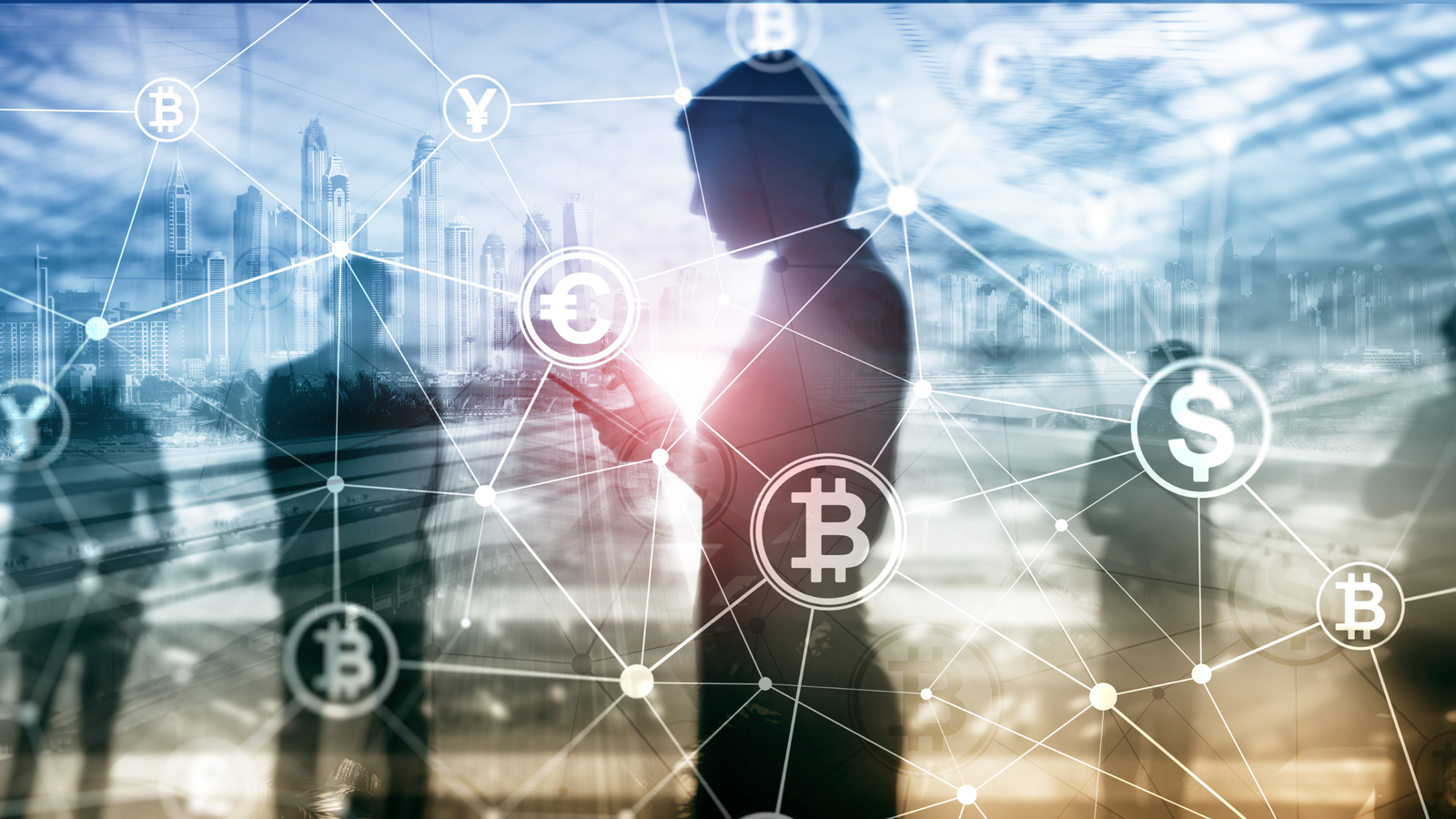Unveiling the Backbone of the Digital Age: The Power of Digital Infrastructure

In the rapidly evolving digital era, the foundation of modern technological advancements lies in digital infrastructure. This vital backbone supports the seamless functioning of our interconnected world, facilitating communication, data transfer, and access to a plethora of digital services. From data centers to high-speed networks, digital infrastructure plays a pivotal role in shaping our daily lives and propelling businesses to new heights. In this blog post, we delve into the significance of digital infrastructure and its impact on our digitalized society.
The Pillars of Digital Infrastructure:
 The Pillars of Digital Infrastructure encompass a set of critical components that form the foundation of modern technological advancements. Each pillar plays a crucial role in ensuring the efficient and seamless functioning of the interconnected digital world. Let’s delve into each pillar in detail:
The Pillars of Digital Infrastructure encompass a set of critical components that form the foundation of modern technological advancements. Each pillar plays a crucial role in ensuring the efficient and seamless functioning of the interconnected digital world. Let’s delve into each pillar in detail:
-
Data Centers:
Data centers serve as the nerve centers of digital infrastructure. These purpose-built facilities house a vast number of servers and networking equipment, storing and processing massive amounts of data. They play a pivotal role in managing, organizing, and delivering digital content, applications, and services to users across the globe. Data centers are equipped with advanced cooling systems, redundant power sources, and robust security measures to ensure uninterrupted operations and data protection.
-
Fiber-Optic Networks:
Fiber-optic networks are the backbone of high-speed data transmission. Utilizing thin strands of glass or plastic to transmit data as pulses of light, these networks offer significantly faster data transfer rates compared to traditional copper-based networks. They enable seamless and real-time communication, making it possible to stream high-definition videos, conduct video conferences, and engage in other bandwidth-intensive activities without delays or interruptions.
-
Cloud Computing:
 Cloud computing revolutionizes the way businesses and individuals access and manage data and software applications. It involves the delivery of computing services, such as storage, databases, servers, and software, over the internet. Cloud-based services offer scalability, flexibility, and cost-effectiveness, as users can access resources on-demand, pay only for what they use, and avoid the need for on-site hardware and maintenance.
Cloud computing revolutionizes the way businesses and individuals access and manage data and software applications. It involves the delivery of computing services, such as storage, databases, servers, and software, over the internet. Cloud-based services offer scalability, flexibility, and cost-effectiveness, as users can access resources on-demand, pay only for what they use, and avoid the need for on-site hardware and maintenance.
-
Wireless Communication Technologies:
Wireless communication technologies, such as 4G and 5G, provide mobile connectivity and enable users to access the internet and digital services on their smartphones and other wireless devices. 5G, the latest generation of wireless technology, promises even higher data speeds, lower latency, and increased capacity, paving the way for revolutionary applications like the Internet of Things (IoT), augmented reality (AR), and autonomous vehicles.
-
Internet Exchange Points (IXPs):
Internet Exchange Points serve as crucial meeting points where different internet service providers (ISPs) and networks interconnect and exchange traffic. IXPs play a significant role in reducing latency, improving network performance, and enhancing internet resilience. They enable efficient data routing, ensuring that data packets take the shortest and most direct path to their destination, thereby optimizing the internet’s overall performance.
-
Edge Computing:
Edge computing brings computing resources closer to the location of data sources and end-users. By processing data locally at the edge of the network, closer to the user or device, edge computing reduces latency and minimizes the need for data to travel long distances to centralized data centers. This is particularly important for time-sensitive applications, such as autonomous vehicles, real-time analytics, and IoT devices.
The Pillars of Digital Infrastructure, including data centers, fiber-optic networks, cloud computing, wireless communication technologies, IXPs, and edge computing, collectively empower our digitally connected world. These essential components enable seamless communication, efficient data processing, and accessibility to a wide range of digital services, laying the groundwork for the transformative capabilities of the modern digital age.
Enabling Connectivity and Communication
 Enabling connectivity and communication refers to the process of establishing and maintaining seamless connections between various devices, networks, and individuals in the digital world. This vital aspect of digital infrastructure plays a pivotal role in facilitating efficient data exchange, real-time interactions, and the seamless flow of information across the global network. Let’s explore the key elements of enabling connectivity and communication in detail:
Enabling connectivity and communication refers to the process of establishing and maintaining seamless connections between various devices, networks, and individuals in the digital world. This vital aspect of digital infrastructure plays a pivotal role in facilitating efficient data exchange, real-time interactions, and the seamless flow of information across the global network. Let’s explore the key elements of enabling connectivity and communication in detail:
-
Network Infrastructure:
At the heart of enabling connectivity is the network infrastructure. It comprises a complex system of interconnected devices, routers, switches, and servers that work together to transmit data packets between different points in the network. The network infrastructure includes both wired (e.g., Ethernet, fiber-optic) and wireless (e.g., Wi-Fi, cellular) technologies, allowing devices to connect and communicate over short and long distances.
-
Internet Service Providers (ISPs):
Internet Service Providers are essential entities that provide individuals, businesses, and organizations with access to the internet. They offer various types of internet connections, such as DSL, cable, fiber-optic, and mobile data plans. ISPs play a crucial role in ensuring that users have reliable and high-speed internet access, which is fundamental for staying connected to digital services and resources.
-
Communication Protocols:
Communication protocols define the rules and conventions for transmitting data across networks. They ensure that devices can understand and interpret the information exchanged between them. Common communication protocols include TCP/IP (Transmission Control Protocol/Internet Protocol), HTTP (Hypertext Transfer Protocol), SMTP (Simple Mail Transfer Protocol), and others. These protocols enable devices to communicate effectively and reliably, ensuring data integrity and security.
-
Internet of Things (IoT):
The Internet of Things is an interconnected ecosystem of smart devices, sensors, and objects embedded with internet connectivity. IoT devices collect and exchange data autonomously, enabling seamless communication between physical and digital systems. From smart home devices to industrial sensors, IoT enables a wide range of applications, enhancing automation, efficiency, and convenience.
-
VoIP (Voice over Internet Protocol):
VoIP is a technology that allows voice communications to be transmitted over the internet rather than traditional telephone lines. It enables cost-effective and feature-rich voice calls, video conferencing, and other communication services. VoIP has revolutionized business communication, providing businesses with advanced collaboration tools and flexibility.
-
Social Media and Instant Messaging:

Social media platforms and instant messaging applications have become vital channels for digital communication. They enable individuals and businesses to connect, share information, and engage with others in real-time. These platforms facilitate both personal and professional communication, fostering global connections and enabling efficient communication across borders.
-
Cloud Communication:
Cloud communication services leverage cloud computing technology to deliver a wide range of communication tools, such as cloud-based phone systems, messaging platforms, and video conferencing services. Cloud communication offers scalability, cost-effectiveness, and flexibility, allowing businesses to easily adapt to changing communication needs.
Enabling connectivity and communication is about establishing robust networks, implementing communication protocols, embracing IoT, leveraging VoIP and cloud communication, and embracing social media. Together, these elements empower individuals, businesses, and organizations to stay connected, collaborate effectively, and access the wealth of digital resources and opportunities available in the modern interconnected world.
Empowering the Digital Economy
 Empowering the Digital Economy refers to the process of enabling and strengthening the various aspects of the digital ecosystem to drive economic growth, innovation, and transformation. It involves providing individuals, businesses, and governments with the tools, resources, and opportunities to leverage digital technologies effectively. By fostering an environment that supports digital innovation, entrepreneurship, and connectivity, the digital economy can flourish, leading to increased productivity, job creation, and improved quality of life. Empowering the Digital Economy is essential in today’s interconnected world, where technology plays a pivotal role in shaping and revolutionizing how we live, work, and interact.
Empowering the Digital Economy refers to the process of enabling and strengthening the various aspects of the digital ecosystem to drive economic growth, innovation, and transformation. It involves providing individuals, businesses, and governments with the tools, resources, and opportunities to leverage digital technologies effectively. By fostering an environment that supports digital innovation, entrepreneurship, and connectivity, the digital economy can flourish, leading to increased productivity, job creation, and improved quality of life. Empowering the Digital Economy is essential in today’s interconnected world, where technology plays a pivotal role in shaping and revolutionizing how we live, work, and interact.
Empowering the Digital Economy involves several key aspects and strategies aimed at fostering growth and innovation in the digital realm. Here are some essential elements of empowering the digital economy in detail:
-
Digital Infrastructure:
Building a robust and reliable digital infrastructure is the foundation of empowering the digital economy. This includes high-speed internet connectivity, advanced telecommunications networks, and data centers to support the seamless flow of information and communication.
-
E-Government Initiatives:
Governments play a vital role in empowering the digital economy by implementing e-government initiatives. This involves providing online services, digital platforms for citizens to access government information, and streamlined processes for public services, such as tax filing, permit applications, and healthcare registration.
-
Digital Skills Development:
Empowering the digital economy requires equipping individuals with the necessary digital skills and literacy. Offering training programs, workshops, and educational opportunities in areas like coding, data analysis, and digital marketing helps create a skilled workforce that can drive innovation and productivity.
-
Innovation and Research:
Supporting research and development in digital technologies is crucial for empowering the digital economy. Encouraging innovation in areas like artificial intelligence, blockchain, and Internet of Things (IoT) leads to breakthroughs that can revolutionize industries and enhance economic competitiveness.
-
Entrepreneurship and Startups:
 Fostering a conducive environment for startups and digital entrepreneurs is essential for empowering the digital economy. This can be achieved through incubators, accelerators, and financial incentives that encourage the development of new businesses and disruptive ideas.
Fostering a conducive environment for startups and digital entrepreneurs is essential for empowering the digital economy. This can be achieved through incubators, accelerators, and financial incentives that encourage the development of new businesses and disruptive ideas.
-
Cybersecurity and Data Privacy:
Ensuring robust cybersecurity measures and safeguarding data privacy are critical for empowering the digital economy. Trust and confidence in digital technologies are essential for individuals and businesses to fully embrace the digital transformation.
-
Digital Inclusion:
Empowering the digital economy should be an inclusive process, ensuring that marginalized and underserved populations have access to digital technologies and opportunities. Bridging the digital divide is crucial for achieving sustainable and equitable economic growth.
-
E-Commerce and Digital Trade:
Facilitating e-commerce and digital trade enhances cross-border transactions and opens up new markets for businesses. This can boost economic growth and provide opportunities for businesses of all sizes to expand their reach globally.
-
Digital Financial Services:
Enabling digital payment systems and fintech solutions empowers the digital economy by promoting financial inclusion and improving access to financial services for individuals and businesses.
- Smart Cities and Digital Transformation: Implementing smart city initiatives and digital transformation in various sectors, such as healthcare, transportation, and energy, can lead to increased efficiency and sustainability, driving economic development.
Empowering the digital economy is an ongoing and collaborative effort involving governments, businesses, educational institutions, and communities. By investing in digital infrastructure, fostering innovation, and ensuring digital inclusion, societies can fully harness the potential of the digital age for economic prosperity and societal progress.
Harnessing the Power of Big Data and AI
 Harnessing the Power of Big Data and AI involves leveraging the vast amount of data generated in today’s digital world and using artificial intelligence (AI) technologies to derive valuable insights, make informed decisions, and drive innovation. Here is a detailed explanation of this concept:
Harnessing the Power of Big Data and AI involves leveraging the vast amount of data generated in today’s digital world and using artificial intelligence (AI) technologies to derive valuable insights, make informed decisions, and drive innovation. Here is a detailed explanation of this concept:
-
Big Data:
Big Data refers to the massive volume of structured and unstructured data generated from various sources, including social media, sensors, mobile devices, and online transactions. Harnessing Big Data involves collecting, storing, and processing this data to extract meaningful patterns, trends, and correlations that traditional data processing methods may miss.
-
Data Analytics:
Data analytics is the process of examining and analyzing Big Data to identify useful information and actionable insights. Through data analytics, organizations can gain a deeper understanding of customer behavior, market trends, operational efficiency, and other critical aspects of their business.
-
Predictive Analytics:
Big Data and AI enable predictive analytics, which involves using historical data and machine learning algorithms to make predictions about future events or outcomes. Predictive analytics helps businesses anticipate customer needs, identify potential risks, and optimize decision-making.
-
AI and Machine Learning:
AI and machine learning are key components of harnessing the power of Big Data. AI algorithms and machine learning models can process large datasets, identify patterns, and continuously learn from new data to improve accuracy and efficiency.
-
Personalization and Customer Experience:
 By harnessing Big Data and AI, businesses can personalize their products and services based on individual customer preferences and behavior. This leads to a more personalized and enhanced customer experience, which can result in increased customer loyalty and satisfaction.
By harnessing Big Data and AI, businesses can personalize their products and services based on individual customer preferences and behavior. This leads to a more personalized and enhanced customer experience, which can result in increased customer loyalty and satisfaction.
-
Fraud Detection and Risk Management:
Big Data and AI play a crucial role in fraud detection and risk management. By analyzing large volumes of transactional data in real-time, organizations can quickly identify fraudulent activities and mitigate potential risks.
-
Healthcare and Research:
In the healthcare industry, harnessing the power of Big Data and AI can lead to advancements in medical research, precision medicine, disease prediction, and personalized treatment plans.
-
Supply Chain Optimization:
Big Data and AI enable supply chain optimization by analyzing vast amounts of data related to inventory, logistics, and customer demand. This leads to better inventory management, reduced costs, and improved supply chain efficiency.
-
Smart Cities and IoT:
In the context of smart cities, Big Data and AI facilitate the integration of data from various IoT devices to enhance urban planning, traffic management, energy efficiency, and public services.
-
Business Process Automation:
Leveraging Big Data and AI allows organizations to automate repetitive and time-consuming tasks, freeing up human resources to focus on more strategic and creative aspects of their work.
Harnessing the power of Big Data and AI requires not only advanced technologies but also a data-driven culture and a clear strategy for data management and utilization. By effectively utilizing Big Data and AI technologies, organizations can unlock valuable insights, drive innovation, and gain a competitive advantage in today’s data-driven world.
Cybersecurity and Resilience
 Cybersecurity and Resilience refer to the measures and strategies taken to protect digital systems, networks, and data from cyber threats and to ensure their ability to withstand and recover from cyberattacks. Here is a detailed explanation of these concepts:
Cybersecurity and Resilience refer to the measures and strategies taken to protect digital systems, networks, and data from cyber threats and to ensure their ability to withstand and recover from cyberattacks. Here is a detailed explanation of these concepts:
-
Cybersecurity:
Cybersecurity involves a set of practices, technologies, and processes designed to safeguard digital assets, including computer systems, networks, software, and data, from unauthorized access, damage, disruption, or theft. The goal of cybersecurity is to prevent, detect, and respond to cyber threats effectively.
-
Threats and Attack Vectors:
Cyber threats encompass various malicious activities, such as hacking, phishing, malware attacks, ransomware, distributed denial-of-service (DDoS) attacks, and insider threats. Attackers exploit vulnerabilities in systems and applications to gain unauthorized access or disrupt operations.
-
Risk Management:
Cybersecurity focuses on identifying and managing risks associated with cyber threats. Organizations assess their vulnerabilities, potential impact of attacks, and implement risk mitigation strategies to reduce the likelihood of successful cyberattacks.
-
Security Layers:
A robust cybersecurity framework involves multiple layers of security defenses. These include firewalls, intrusion detection and prevention systems (IDPS), antivirus software, encryption, access controls, and multifactor authentication (MFA).
-
Security Awareness and Training:
 Educating employees and users about cybersecurity best practices is crucial in preventing cyber incidents. Training programs raise awareness about potential risks and teach individuals how to recognize and respond to cyber threats.
Educating employees and users about cybersecurity best practices is crucial in preventing cyber incidents. Training programs raise awareness about potential risks and teach individuals how to recognize and respond to cyber threats. -
Incident Response and Recovery:
Cybersecurity resilience includes having a well-defined incident response plan in place. This plan outlines the steps to be taken in the event of a cyber incident, ensuring a timely and effective response to mitigate the impact and restore normal operations.
-
Cybersecurity Regulations and Compliance:
Many industries and organizations are subject to cybersecurity regulations and compliance standards to ensure data protection and privacy. Adhering to these regulations helps organizations maintain a strong security posture.
-
Continuous Monitoring and Threat Intelligence:
Cybersecurity requires continuous monitoring of networks and systems for potential threats. Threat intelligence helps organizations stay informed about emerging cyber threats and vulnerabilities, enabling proactive security measures.
-
Cybersecurity in the Cloud:
As more businesses adopt cloud computing, cybersecurity measures need to extend to cloud environments. Cloud security involves securing data, applications, and infrastructure in cloud platforms to prevent unauthorized access.
-
Business Continuity Planning:
Cybersecurity resilience includes developing and testing business continuity plans to ensure that critical business functions can continue in the face of cyber incidents or disruptions.
Cybersecurity and resilience are critical components of any organization’s IT strategy. As cyber threats continue to evolve, implementing comprehensive cybersecurity measures and building resilience are essential to protect sensitive information, maintain operational continuity, and safeguard the trust of customers and stakeholders.
Bridging the Digital Divide
 Bridging the Digital Divide refers to the efforts and initiatives taken to reduce the gap between those who have access to digital technologies and the internet and those who do not. The term “digital divide” highlights the disparity in access to information and communication technologies (ICTs) and the opportunities they offer. Here is a detailed explanation of Bridging the Digital Divide:
Bridging the Digital Divide refers to the efforts and initiatives taken to reduce the gap between those who have access to digital technologies and the internet and those who do not. The term “digital divide” highlights the disparity in access to information and communication technologies (ICTs) and the opportunities they offer. Here is a detailed explanation of Bridging the Digital Divide:
-
Access to Technology:
One of the primary aspects of the digital divide is unequal access to technology. Many communities, especially in rural or economically disadvantaged areas, lack access to computers, smartphones, and the internet. Bridging the digital divide involves providing affordable and reliable access to these technologies to underserved populations.
-
- Internet Connectivity: Access to high-speed and reliable internet connectivity is essential in the digital age. Bridging the digital divide involves expanding broadband infrastructure and internet access in remote and marginalized areas, enabling people to participate in the digital world.
-
Digital Literacy and Skills:
Having access to technology is not enough; individuals need the skills and knowledge to effectively use digital tools and the internet. Digital literacy programs offer training and education on basic computer skills, internet usage, online safety, and other essential aspects of using digital technologies.
-
Education and E-Learning:
Bridging the digital divide in education is critical for ensuring equal learning opportunities. Integrating technology into educational institutions and providing e-learning platforms enable students, regardless of their location, to access quality education and resources.
-
Economic Opportunities:
Access to digital technologies opens up new economic opportunities for individuals and communities. By bridging the digital divide, people gain access to online job opportunities, e-commerce platforms for selling products, and digital payment systems, empowering them to participate in the digital economy.
-
Government and Public Services:
 Bridging the digital divide also involves making government services and information accessible online. E-government initiatives aim to provide digital access to public services, healthcare, and other essential resources.
Bridging the digital divide also involves making government services and information accessible online. E-government initiatives aim to provide digital access to public services, healthcare, and other essential resources.
-
Inclusivity and Diversity:
Efforts to bridge the digital divide should consider the needs of diverse populations, including marginalized communities, people with disabilities, and the elderly. Digital inclusion involves creating accessible and inclusive digital environments that cater to all individuals.
-
Digital Infrastructure:
Building and upgrading digital infrastructure, such as public Wi-Fi networks and community technology centers, play a vital role in expanding digital access to underserved areas.
-
Public-Private Partnerships:
Collaboration between government, private companies, non-profit organizations, and communities is essential in bridging the digital divide. Public-private partnerships can leverage resources and expertise to create comprehensive solutions.
-
Monitoring and Evaluation:
Bridging the digital divide requires ongoing monitoring and evaluation of progress and impact. Assessing the effectiveness of initiatives helps refine strategies and ensure that resources are allocated optimally.
Bridging the Digital Divide is crucial for promoting social and economic inclusion, empowering individuals and communities, and fostering equitable development in the digital era. It requires concerted efforts from various stakeholders to ensure that no one is left behind in the transformative power of digital technologies.

